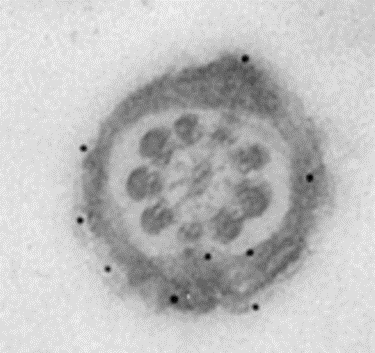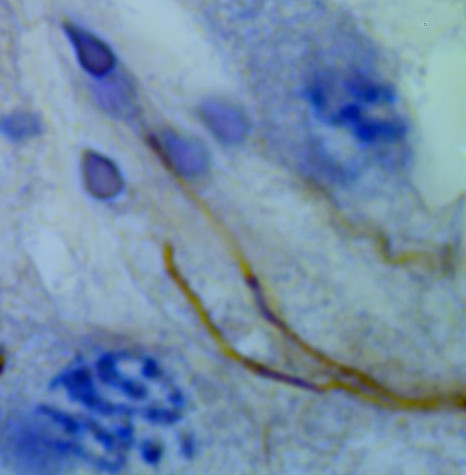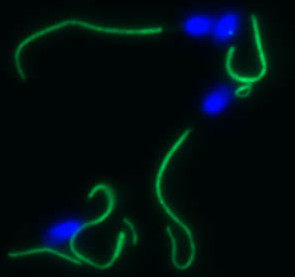ProAKAP4 Concentration as A Functional Sperm Parameter
Reproductive Medecine - Male Fertility
Spermatozoa without proAKAP4/AKAP4 are immotile and infertile. ProAKAP4 is required as a functional molecule for sperm motility and functionality.
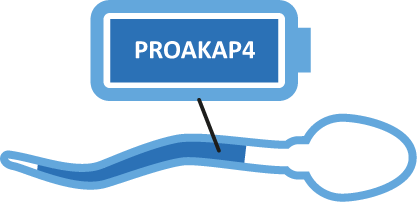
Spermatozoa of male mice knocked-out of the AKAP4 gene have an abnormal fibrous sheath structure and are immotile (Miki et al., 2002, Fang et al., 2019 ; Xu et al. 2020).
ProAKAP4 is ONLY expressed in spermatozoa (synthesis of the protein begin in the testis at the spermatid stage up to spermatozoa).
The full stock of proAKAP4 is synthetized BEFORE ejaculation.
Structurally, the proAKAP4 is the precursor of AKAP4 protein. Largely described, AKAP4 play a central role in flagellar structure, chemotaxis, capacitation and sperm motility (Luconi et al., 2011, Sergeant et al., 2019 ; Delehedde et al. 2019))
ProAKAP4 and AKAP4 are specifically localized to the fibrous sheath of the principal piece of the flagellum and are involved in flagellum structure and sperm motility (see application). Spermatozoa from mice lacking AKAP4 failed to show progressive motility and homozygous male mice are unfertile (Miki et al., 2002, Fang et al., 2019). Spermatozoa of male mice knocked-out of the AKAP4 gene have an abnormal fibrous sheath structure and are immotile.
ProAKAP4 concentrations reflects IF and HOW LONG spermatozoa will be MOTILE and FERTILE
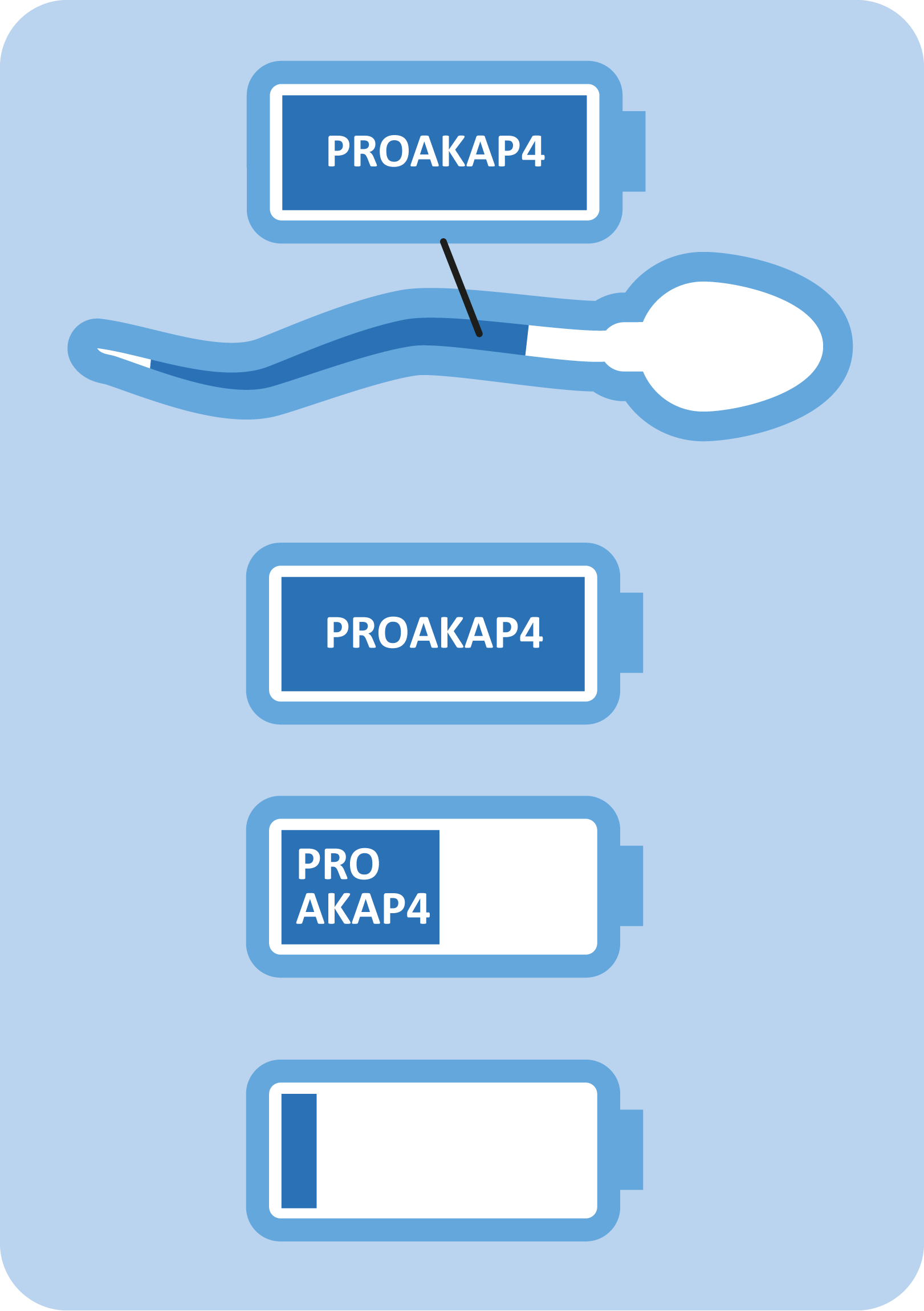
Examples of proAKAP4 as a marker of male fertility dysfunctions.
The proAKAP4 has been described for years in male fertility dysfunction studies. Any modification of proAKAP4 expression during spermatogenesis or modification in its metabolism will have consequences on sperm motility, hyper motility, sperm capacitation and then fertility (Delehedde et al., 2019).
Measuring expression and levels of concentrations of proAKAP4 in semen appears today an interesting approach to evaluate semen quality in males infertility disorders.
|
Male Fertility Disorders |
ProAKAP4 /AKAP4 |
References |
|
MMAF |
- |
Liu et al. 2019 |
|
Fibrous Sheath Dysplasia |
Absence or decrease expression compared to controls
Deletion mutation |
Turner et al. 2001 Baccetti et al. 2005 Baccetti et al. 2005 Moretti et al. 2007 Pereira et al. 2015
Baccetti et al. 2005 |
|
Asthenozoospermia |
Decrease expression compared to control Downregulation of AKAP4 protein Downregulation of AKAP4 protein
Coding mutation: G>A in 1 patient |
Baccetti et al. 2004 Hashemitabar et al. 2015 Parte et al. 2012
Visser et al. 2011 |
|
Azoospermia |
Downregulation of AKAP4 (6.67fold) Downregulation of AKAP4 gene |
Malcher et al. 2013 Kurpisz et al. 2014 |
|
Idiopathic infertility |
Decrease expression compared to control
Downregulation of AKAP4 proteins Decrease expression compared to control Downregulation of AKAP4 proteins |
Moretti et al. 2007 Frapsauce et al. 2009 Xu et al. 2012 Frapsauce et al. 2014 Jumeau et al. 2018– |
In a context of male infertility management, evaluate sperm functionality is rather important to measusre semen quality in preclinical, toxicological and clinical settings.
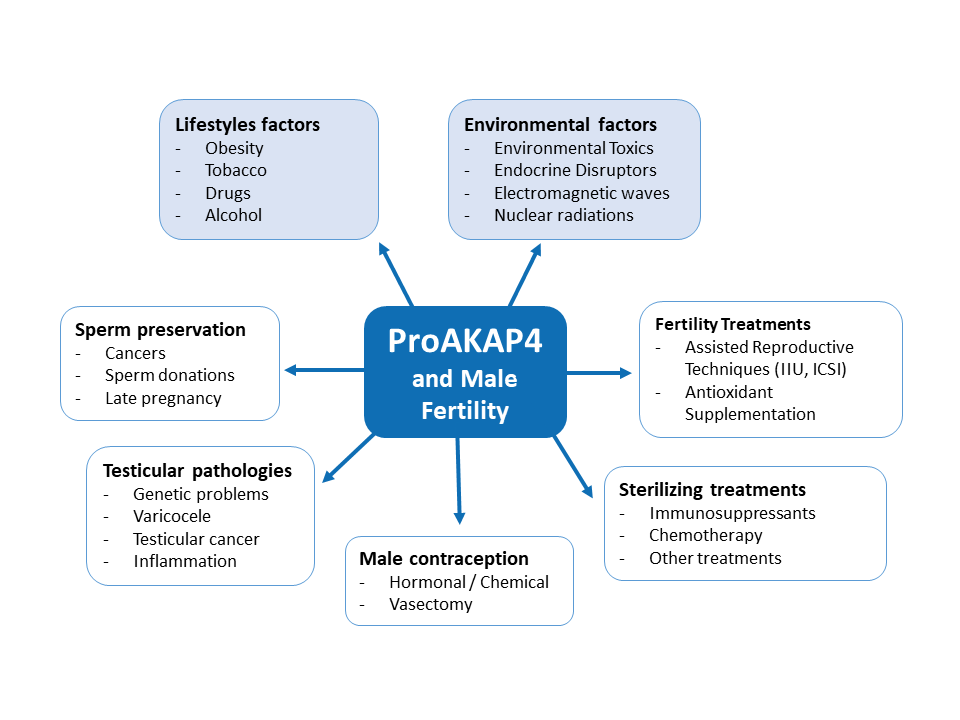
Measuring proAKAP4 concentrations using the 4MID Kit as a follow up of sperm quality after adding any types of molecules such as drugs, cosmetics, food additive, vaccine, hormones, contraceptive agents, etc.
Please visit our page products for more details, click here.
The mouse monoclonal antibody anti-AKAP4 clone 7E10 (Ref. 4BDX-1602) recognizes the carboxy-terminal region of A-kinase anchor protein 4 (AKAP4) and is suitable for Western Blot, for Immunohistochemistry, ELISA, Electron Microscopy and Immunofluorescence.
1. 2.
3.
1. Electron Microscopy (flagellum coronal section)
2. Immunohistochemistry (Human Testis)
3. Immunofluorescence (Human Spermatozoa)
Do not hesitate to contact us at contact@4biodx.com for more details or for any collaborative studies on our biomarkers.
More details :
In the litterature, AKAP4 was previously named AKAP82, PRKA4 (Protein Kinase A Anchoring Protein 4), CT99 (Cancer/Testis Antigen 99), HI, p82, or FSC1 (Fibrous Sheath Component 1). AKAP4 (A-Kinase Anchor Protein 4) protein belongs to the family of A-kinase anchor proteins (AKAPs) all sharing a common function of binding to the regulatory subunit of protein kinase A (PKA) and confining the PKA holoenzyme to discrete locations within the cell. Therefore, AKAP4 is an essential regulator of PKA and PKC protein kinases signalling to the motor protein dynein of the axoneme of flagellum.
AKAP4 can be serine- and tyrosine-phosphorylated in a capacitation-dependent manner in human spermatozoa but the nature of the kinases involved are not yet elucidated.

